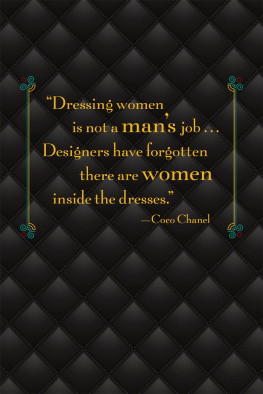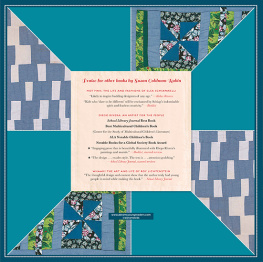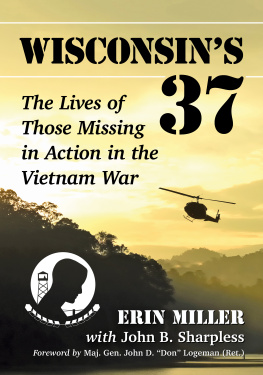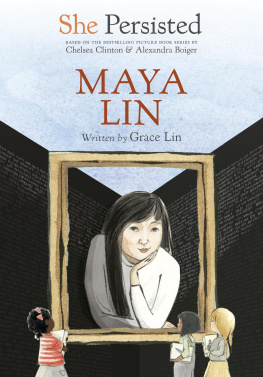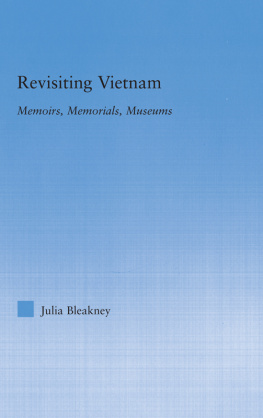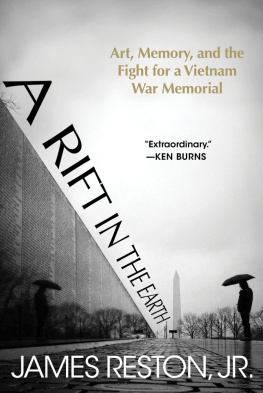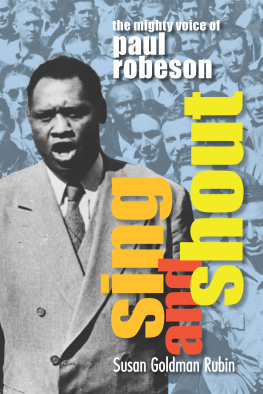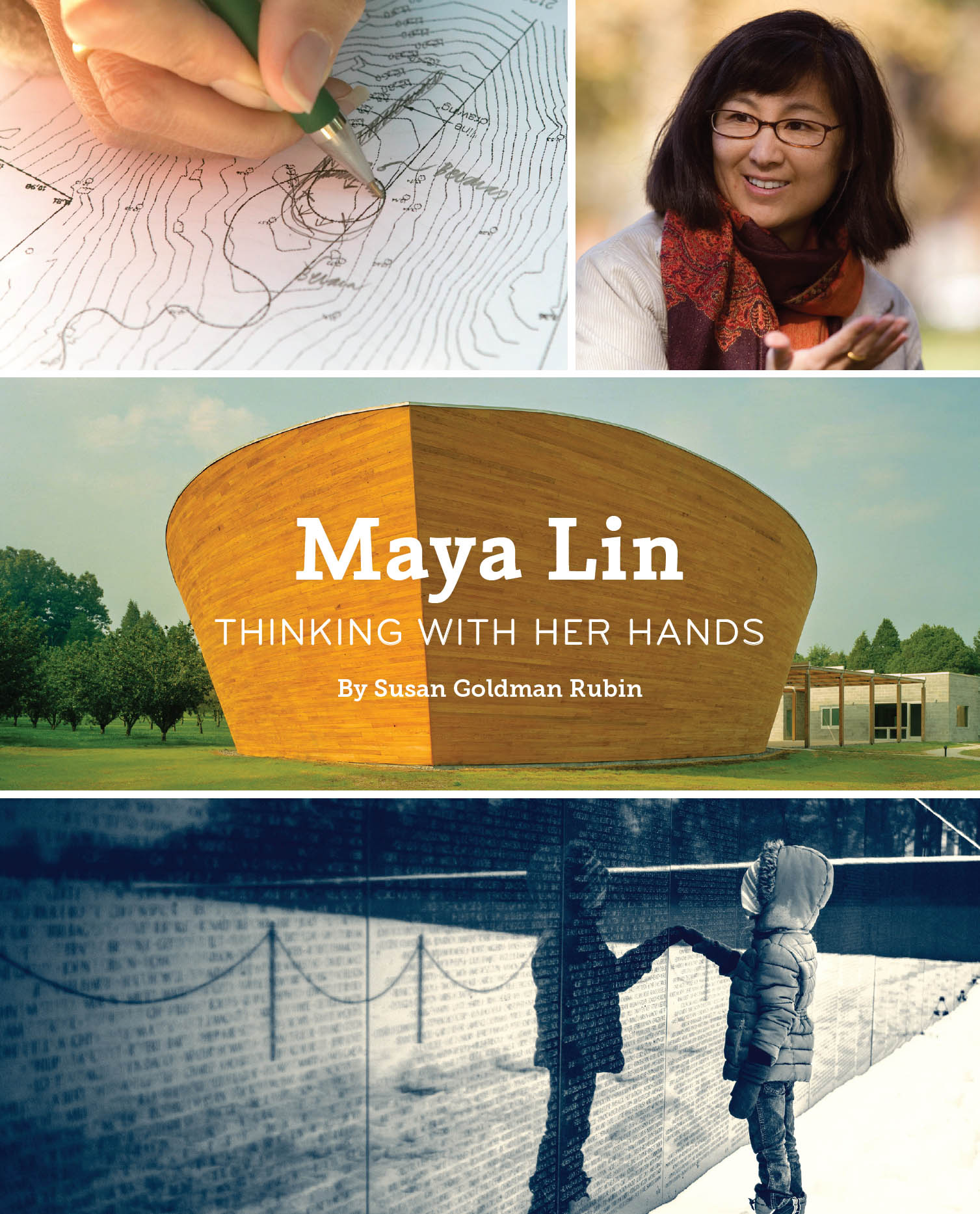
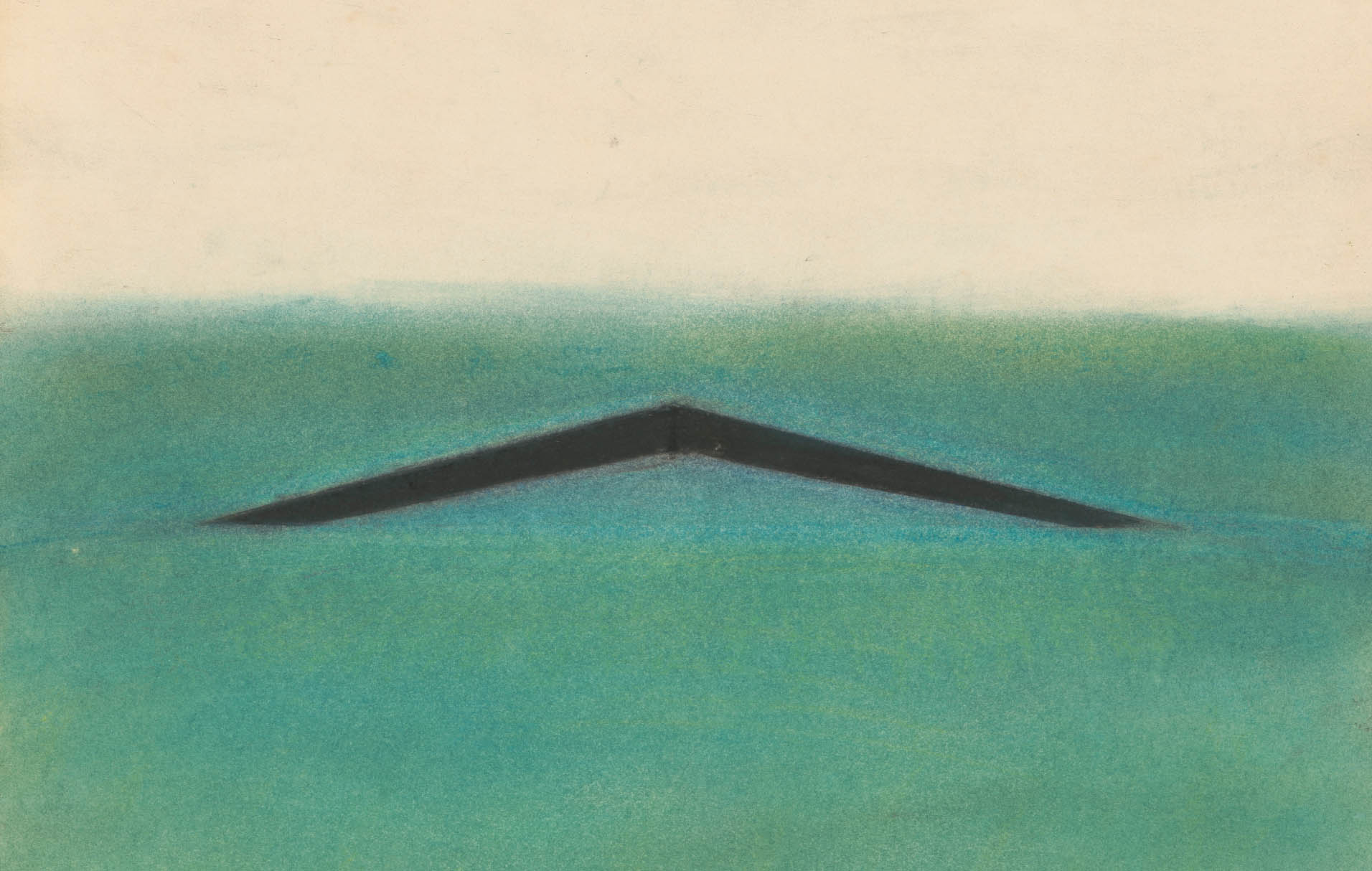
ALSO BY SUSAN GOLDMAN RUBIN:
Wideness & Wonder:
The Life and Art of Georgia OKeeffe
Delicious: The Life & Art of Wayne Thiebaud
Everybody Paints!
The Lives and Art of the Wyeth Family
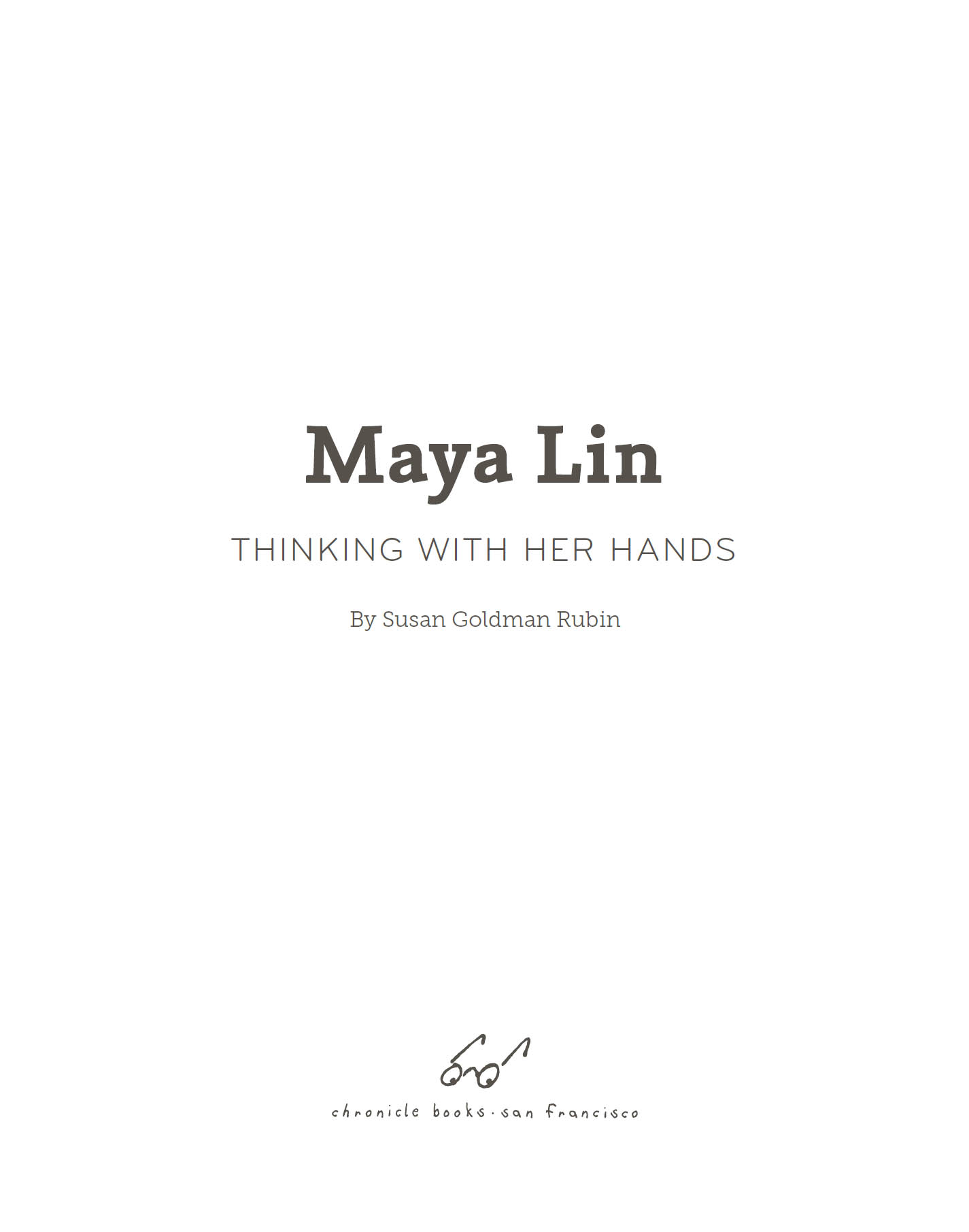
For my daughter Katherine.
Copyright 2017 by Susan Goldman Rubin.
All rights reserved. No part of this book may be reproduced in any form without written permission from the publisher.
Jacket/case images, front (clockwise from top left): Maya Lin drawing Eleven Minute Line, Anders Norsell. Courtesy of The Wans Foundation; Photo of Maya Lin 2006 by AP Photo/Jackie Johnston; Riggio-Lynch Chapel, Timothy Hursley. Courtesy Maya Lin Studio; Young child visiting the Vietnam Veterans Memorial Mickie DeVries/Offset.com.
Jacket/case image, back: Drawing from Maya Lins submission for the Vietnam Veterans Memorial.
Library of Congress.
Endpaper images: Drawings from Maya Lins submission for the Vietnam Veterans Memorial.
Library of Congress.
Additional image credits and copyright information on .
Library of Congress Cataloging-in-Publication Data:
Names: Rubin, Susan Goldman, author.
Title: Maya Lin : thinking with her hands / Susan Rubin.
Description: San Francisco : Chronicle Books, 2017.
Identifiers: LCCN 2016058584 | ISBN 9781452108377 (hardback) ISBN 9781452140896 (epub 2)
Subjects: LCSH: Lin, Maya YingJuvenile literature. | ArchitectsUnited StatesBiographyJuvenile literature. | Chinese American architectsUnited StatesBiographyJuvenile literature. | ArtistsUnited StatesBiographyJuvenile literature. | Chinese American artistsUnited StatesBiographyJuvenile literature. | BISAC: JUVENILE NONFICTION / Biography & Autobiography / Art. | JUVENILE NONFICTION / History / United States / 20th Century. | JUVENILE NONFICTION / Art / General.
Classification: LCC NA737.L48 R83 2017 | DDC 720.92 [B] dc23 LC record available at https://lccn.loc.gov/2016058584
Design by Kayla Ferriera.
Typeset in Pluto Sans, Silica, and Bryant Pro.
Chronicle Books LLC
680 Second Street
San Francisco, California 94107
Chronicle Bookswe see things differently.
Become part of our community at www.chroniclekids.com.
AUTHORS NOTE
Why write a book about Maya Lin? I wanted to find out more about the woman who designed one of the most visited memorials in the world, the Vietnam Veterans Memorial in Washington, D.C., while she was still just a college student. As I did research, I discovered other works she had designed that deeply moved me: the Civil Rights Memorial in Montgomery, Alabama; the Langston Hughes Library and Riggio-Lynch Interfaith Chapel in Clinton, Tennessee; and the memorial that she is currently working on, which she says will be her last. Titled What Is Missing?, it is a science-based project intended to make people aware of species and habitat loss around the world.
But Maya does not want to be known only for her memorials. She says, You need to see me whole as an artist. What Im doing is art, architecture, and memorials.
In this book I hope I have achieved that goal and have captured the artist Maya Lin thinking with her hands.
I was making things my whole childhood and I still am.
Maya Lin
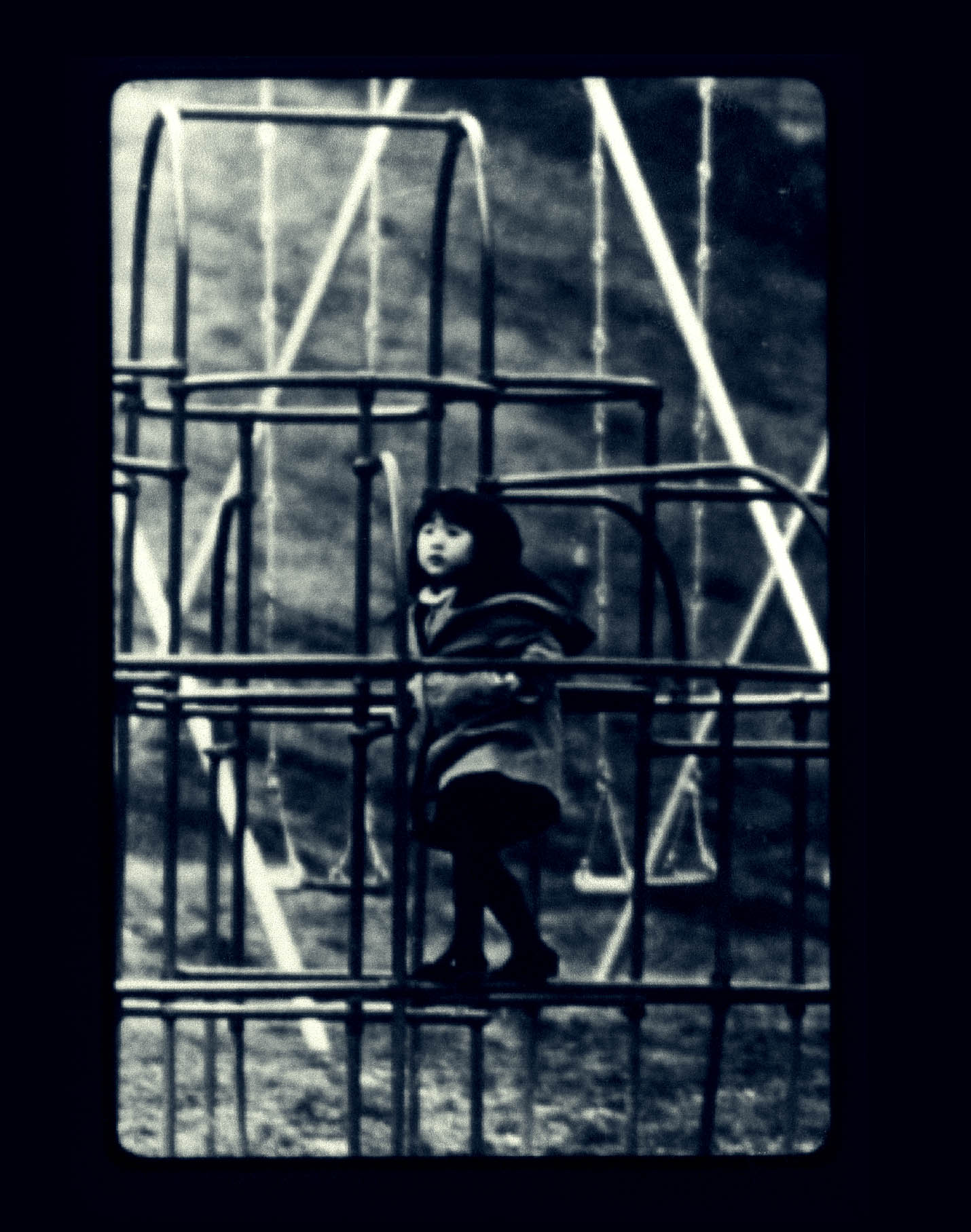
Maya, around age four, Athens, Ohio.
Clay
CHAPTER ONE: Cable Lane
As a child Maya never dreamed of becoming an artist. She loved animals and planned to become a veterinarian when she grew up. She and her older brother, Tan, roamed the woods behind their house on Cable Lane in Athens, Ohio. She would sit quietly and watch the rabbits, squirrels, and birds. Maya didnt have many friends. So I made up my own world, she says. In her bedroom she built paper houses and villages, and later she made things out of silver and clay. All these childhood experiences were to greatly influence her adult work as an artist and architect.
Maya Ying Lin was born on October 5, 1959. Her middle name means precious stone in Chinese. She and Tan grew up surrounded by art. My father was a ceramicist and my mother a poet, wrote Maya. Her parents both taught at Ohio University.
Every afternoon after school she and Tan walked over to their fathers studio. Maya loved to watch her father knead the clay, pound it, push it, and cut it through with wire. He worked with it effortlessly, she wrote. Mayas father would let her play with clay. At home the family ate from stoneware plates and bowls that he had made. The glazes on the ceramics were the natural earth colors that Maya liked bestand still does.
Her mother, on the other hand, preferred red, the color that in Chinese tradition symbolizes good luck and happiness. Maya said, My mother dressed me up in too many red dresses. I hate the color red!
Mayas parents had both been born in China. They had escaped to the United States in the 1940s during a civil war. From an early age Maya was very aware of her parents feeling that Athens, Ohio, was not really home. For them, their true home, China, belonged to the past, she wrote. Yet they didnt talk about their history, and Maya didnt ask questions. She didnt know her grandparents or her aunts and uncles. When I was little, she said, we would get letters from China, in Chinese, and theyd be censored.

Maya, around age one, with her brother, Tan, and their parents in their home in Athens, Ohio.
Although Maya says she comes from two heritages, she didnt think of herself as Asian American as she was growing up. I thought I was white. I wanted to fit in, she said.
I probably spent the first twenty years of my life wanting to be as American as possible.
Maya loved school. I studied like crazy, she said. I was a Class A nerd. While she was still a student in Athens High School, she took courses in computers and science at the university. She got straight As in everything except for one subject: gym. She despised it and failed.
In most classes Maya wound up as teachers pet. As a result, she says, the other kids probably hated me. I didnt have any friends. Instead she enjoyed hanging out with her teachers. She and her chemistry teacher, Miss McCallan, stayed after school and did experiments. One time I made this incredible powder, flash powder, and I made way too much of it, recalled Maya gleefully. And it exploded! The sound the explosion made was so loud that Maya and Miss McCallan temporarily went deaf. The head science teacher stormed in and said, What did I just hear? The two culprits said innocently, Nothing. We didnt hear anything.
Maya didnt fit in at high school. She wore no makeup and didnt date. Her long hair fell down to her knees. She looked younger than kids her age. I was the smallest in my class, she recalled. I was half the weight of everyone else.
She and her brother stayed close to home. We always ate dinner with our parents, she said. We werent going to the proms or going to the football games.
By her senior year Maya was counting the days till she could leave Athens and go to college. On a lark she applied to Yale, an Ivy League school, never thinking shed get in. No student from Athens High School had ever gone there. But to Mayas surprise she was accepted. So in the fall of 1977 she eagerly took off for New Haven, Connecticut.
Next page

